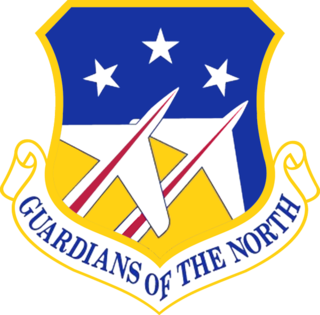
The 85th Group, formerly the Air Forces Iceland, is an inactive United States Air Force organization. Its last assignment was with United States Air Forces in Europe at Naval Air Station Keflavik, Iceland, assigned as a unit of the 48th Fighter Wing whose home station is at RAF Lakenheath, UK. It was inactivated on 28 June 2006.
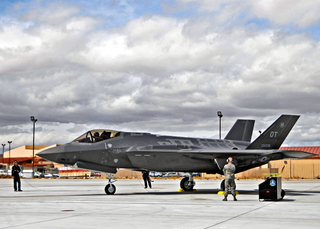
The 53rd Wing is a wing of the United States Air Force based at Eglin Air Force Base, Florida. The wing reports to the United States Air Force Warfare Center at Nellis Air Force Base, Nevada, which in turn reports to Headquarters Air Combat Command.
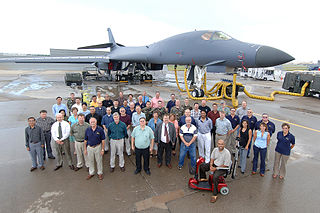
The 327th Aircraft Sustainment Wing is an inactive wing of the United States Air Force last based at Tinker Air Force Base, Oklahoma. It was last assigned to Air Force Materiel Command's Oklahoma City Air Logistics Center.

The 87th Flying Training Squadron is part of the United States Air Force 47th Flying Training Wing based at Laughlin Air Force Base, Texas. It operates T-38 Talon aircraft conducting flight training.

The 15th Test and Evaluation Squadron is a United States Air Force unit, stationed at Eglin Air Force Base, Florida and assigned to the 753rd Test and Evaluation Group. It was first activated in the expansion of the United States military forces prior to World War II as the 15th Pursuit Squadron. It moved to Panama in 1942, where it participated in the defense of the Panama Canal. It returned to the United States, where it was a Replacement Training Unit for fighter pilots until 1944, when it was disbanded as the 15th Fighter Squadron in a reorganization of Army Air Forces training units in 1944
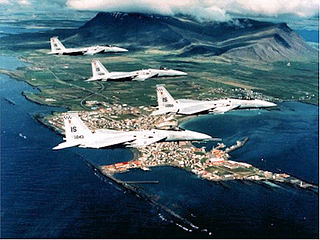
The 57th Fighter-Interceptor Squadron, also known as "The Black Knights of Keflavik", is an inactive United States Air Force unit. The 57 FIS was last stationed at Naval Air Station Keflavik, Iceland. It was inactivated on 1 March 1995.

The 42d Flying Training Squadron is an inactive United States Air Force unit, last assigned to Air Training Command at Columbus AFB, Mississippi, where it was inactivated on 15 December 1991.

The 28th Test and Evaluation Squadron is an active United States Air Force unit. Its current assignment is with the 53d Wing, based at Eglin Air Force Base, Florida.

I Fighter Command was a United States Army Air Forces intermediate command responsible for command and control of the fighter operations within the First Air Force during World War II. It was initially established in June 1941 as the 1st Interceptor Command to provide air defense of the Northeastern United States. Following the attack on Pearl Harbor, the command's area of responsibility extended over the entire Atlantic coast and into Canada and Iceland. As the perceived threat of attack decreased, the command's responsibnility for training units and aircrews became its primary mission. The command continued its mission until March 1946, when it was inactivated.

The IV Fighter Command is a disbanded United States Air Force unit. It was activated under Fourth Air Force at March Field, California in June 1941, when it replaced a provisional organization. It was responsible for training fighter units and for the air defense of the southern portion of the Pacific Coast. Following the attack on Pearl Harbor, the command's units were placed on alert. In 1942, its air defense responsibility was expanded to include the entire Pacific coast of the continental United States and the command moved its headquarters from southern California to Oakland Airport, California, which was more centrally located. As the threat to the Pacific decreased, it was disbanded on 31 March 1944.

The 519th Fighter-Interceptor Squadron is an inactive United States Air Force unit. Its last assignment was with the 521st Air Defense Group at Sioux City Municipal Airport, Iowa, where it was inactivated on 18 August 1955. The squadron was first activated during World War II as the 637th Bombardment Squadron, a dive bomber unit, but was disbanded before participating in combat in a general reorganization of Army Air Forces training units. It was reconstituted during the Cold War as a fighter interceptor unit supporting the air defense of the United States.

The 440th Fighter-Interceptor Squadron is an inactive United States Air Force unit. Its last assignment was with the 86th Fighter-Interceptor Wing at Erding Air Station, Germany, where it was inactivated on 1 January 1960. The squadron served as a NATO air defense unit from February 1953. The squadron was originally established as a Replacement Training Unit during World War II in February 1943, but was disbanded when the Army Air Forces reorganized its training units in 1944.

The 438th Fighter-Interceptor Squadron is an inactive United States Air Force unit. Its last assignment was with the 35th Air Division at Griffiss Air Force Base, New York, where it was inactivated on 30 September 1968. The squadron was first activated as the 438th Fighter Squadron during World War II. It served as an Replacement Training Unit until the spring of 1944, when it was disbanded in a general reorganization of Army Air Forces training units. It was reactivated in 1953 as an air defense unit and served in that role until inactivated.
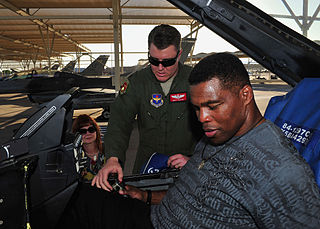
The 56th Training Squadron is an active United States Air Force unit. It is assigned to the 56th Operations Group at Luke Air Force Base, Arizona.
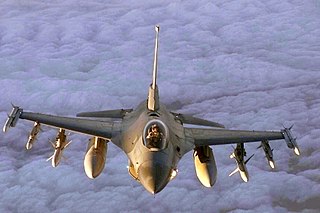
The 54th Fighter Group is an active unit of the United States Air Force stationed at Holloman Air Force Base, New Mexico and assigned to the 49th Wing of Air Education and Training Command. The group was reactivated in March 2014.

The 13th Fighter-Interceptor Squadron is an inactive United States Air Force unit. Its last assignment was with the Minot Air Defense Sector, stationed at Glasgow Air Force Base, Montana where it was inactivated on 30 June 1968.

The 521st Air Defense Group is a disbanded United States Air Force organization. Its last assignment was with the 31st Air Division at Sioux City Municipal Airport, Iowa, where it was inactivated in 1955. The group was originally activated as the 521st Air Service Group, a support unit for the 310th Bombardment Group at the end of World War II in Italy and then redeployed to the United States where it was inactivated in 1945.
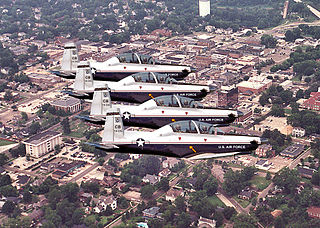
The 14th Operations Group is the flying component of the 14th Flying Training Wing, assigned to the United States Air Force's Air Education and Training Command. The group is stationed at Columbus Air Force Base, Mississippi.

The 87th Troop Carrier Group is an inactive United States Air Force unit. It was last assigned to the 87th Troop Carrier Wing at Atterbury Air Force Base, Indiana where it was inactivated on 1 February 1953.

Sioux City Air National Guard Base is an Iowa Air National Guard base, located at Sioux Gateway Airport It is located 7.2 miles (11.6 km) south-southeast of Sioux City, Iowa. On 25 May 2002, the airport was named "Colonel Bud Day Field" in honor of United States Air Force Colonel George Everette "Bud" Day, a Sioux City, Iowa native and is the only person ever awarded both the Medal of Honor and the Air Force Cross.

























